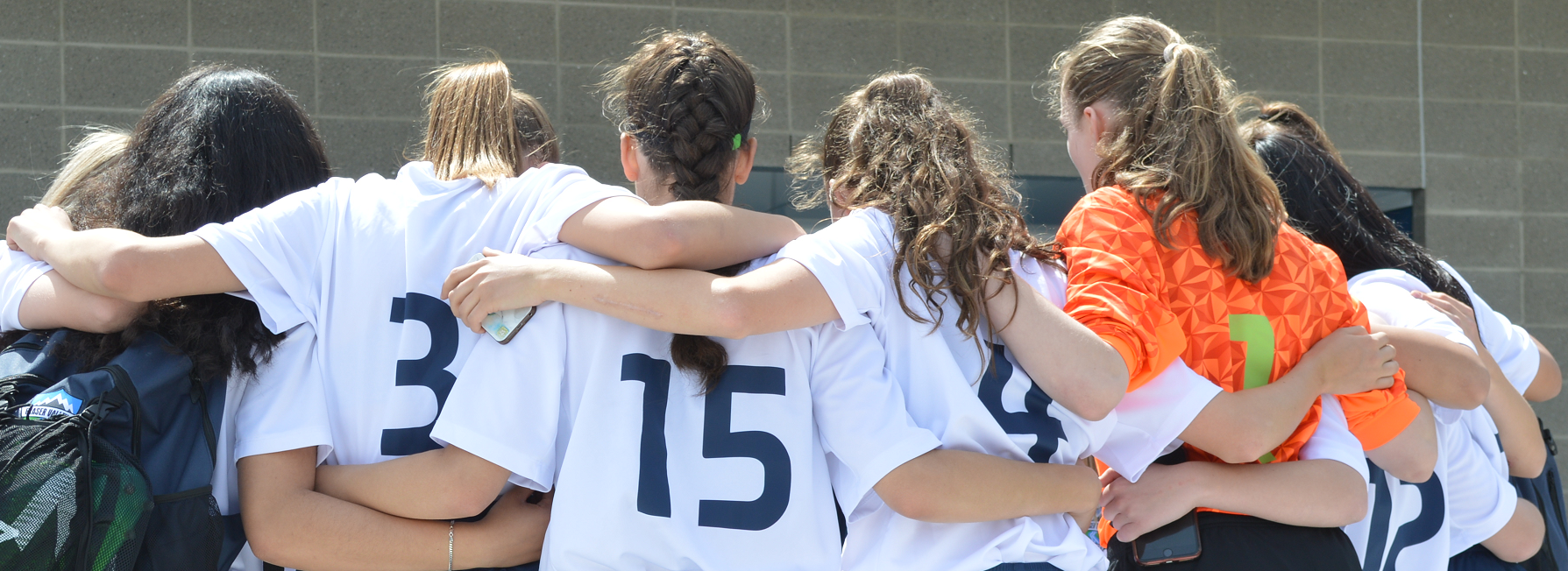Some of my fondest memories have revolved around sport. From the time I was a young girl growing up in the deserts of Kuwait, I vividly remember actively playing tennis on the red clay courts, swimming in the warm waters of the Persian Gulf, figure skating at the local ice arena (yes in the desert!) and watching sports as a bystander sitting on the sidelines cheering on my father, an avid soccer player. Moving to Canada, the love of sport continued. In my schooling years, I looked forward to Physical Education and joined our school sports teams including volleyball and basketball.
Today, I continue to be surrounded by sports. Now, weeknights and weekends are often spent out on a basketball court or soccer pitch, as a mom (and #1 supporter) for my daughters. Sport has been an important part of my life and this love of sport is one that I wanted instilled in my daughters. Why so important?
Sport offers so many important life lessons and teaches us valuable skills that are ultimately transferrable to our personal lives and even our workplaces.
This past weekend as I observed my daughter and her team win gold at their soccer tournament, I reflected back on their journey and came to realize that winning gold was a culmination of so many important lessons along the way. These lessons can be applied to how we also win in the workplace.
Photo by Sofia. Copyright © 2019 – Upskill Consulting. All rights reserved.
LEADERSHIP:
A winning team is only possible under strong leadership. Having an inspirational coach who values each team player for their skills and contributions equates to a more aligned, cohesive and strengthened team out on the pitch. My daughter has had her fair share of both weak and strong coaches throughout her soccer journey. Here are the notable differences of operating under weak versus strong leadership.
|
Weak Leadership |
Strong Leadership |
|
|
INNOVATION AND AGILITY:
With strong leadership, it opens the doors to innovation and agility. A culture encouraging creativity in plays and formations, means teams can continually adapt and improve their performance. Status quo won’t result in championships! It’s the continual efforts to improve that will help the team evolve and grow. Innovation and agility have been evident in my daughters’ team. The coach has switched up positions, formations, tactics and added new players to the roster. All of these “risks” and new approaches have improved performance. This innovative and agile approach to their game has worked.
TRUST:
Innovation and agility won’t thrive in a culture of mistrust. Trust is crucial for a winning team. Trust has to be built. Under a fractured team and weak leadership, my daughter and her teammates struggled with trust. While the coach had a sound strategy in place, his inability to build trust and rapport with and between team members resulted in a weakened team and performance.
STRATEGIC DIRECTION:
One of the key contributors to this past winning season has been the clear strategic direction. The coach had a vision and communicated this clearly and frequently, every opportunity he had from practices to game days. Every member of the team understood the goal and their role in achieving it. This clarity on what we’re aiming for and how to get there resulted in a gold standard team … goal accomplished!
TEAMWORK:
At the beginning of this season the coach made it clear … “The only way we win is if we win together!”. Team sports is all about winning for the team. It’s a collective effort to achieve more wins than defeats. One tactic the coach used to emphasize the “we” in team is he had each player alternate positions. This did a few things:
- By playing various positions (the equivalent of job shadowing in our workplaces), the players gained a deeper understanding and appreciation for each position and its importance in the outcome of the game.
- It provided opportunities to match the right skills to the right position. Without these opportunities, each player would have been stagnant in their assigned position, with no opportunity to grow, expand and showcase their skills in other areas.
- Players understood the needs of their teammates. It fostered a mindset of “what can I do to better support my teammate or x position?”. It’s this connection between my position and other positions that brings about team synergy and cohesion.
COMMUNICATION:
A strong team exhibits strong communication. Comparing the losing versus winning season, here are differences noted in communication.
|
Weak Communication |
Strong Communication |
|
|
DRAFT THE RIGHT TEAM:
Communication, trust and a strong team are all compromised if we don’t draft the right team. The coach knew that he had to have the right players to actualize the goal of winning gold this season. This meant he had hard decisions ahead.
- Switching up positions
- Bringing in new players to shake it up and ultimately replace weaker players
- Providing increased time for top performers, limiting playing time for players lacking in commitment, attitude and drive
These decisions sent a loud and clear message to the team. Play hard and you will be rewarded. This had an immediate ripple effect. Weaker players were weeded out with stronger players taking front stage showing an even stronger commitment and devotion to their game and their team to reach the goal in sight.
KNOW YOUR COMPETITION:
Never get comfortable – an important lesson taught this season. A winning streak can quickly come to an end. To continue to push oneself and the team to be the best possible every game, they knew they had to better understand the competition. The coach had the team observe other teams play and engaged in a debrief after the game. What did you notice? What’s their starting line-up and go-to formation? How do they defend the ball? Who are their key players? What are their blind spots?
Watching competitors play allowed the team to constantly learn various plays and approaches to the game and make the necessary adjustments to compete competitively … being two steps ahead.
HANDLE PRESSURE AND DEFEAT:
We all know that we can’t win em’ all! It’s how we bounce back from a loss that is crucial for the long-term success of the team. The coach took advantage of these “failures”, transforming them into moments of learning and growth. It was these losses that taught the team about resilience and perseverance. They learned what to continue doing, stop doing and start doing moving forward. He comforted the team telling them that risks don’t always result in a happy ending, but that these risks were essential in the growth and success of the team.
CELEBRATE SUCCESS:
Every win and every loss ended with a debrief and kudos for the team. The coach valued each team member and cultivated opportunities to celebrate successes. This meant complimenting players for a job well done, win or loss. This meant soliciting peer-to-peer kudos recognizing each other for their hard work on the pitch. Celebrating success reinforced good performance, boosted motivation, enhanced team spirit and comradery and built momentum for a winning season.

Photo by Sofia. Copyright © 2019 – Upskill Consulting. All rights reserved.
10 important lessons learned from watching my daughter play soccer this season! From the soccer pitch to the workplace, these are 10 lessons that result in a winning team and culture.
- Demonstrating strong leadership
- Fostering innovation and agility
- Establishing trust and rapport
- Defining strategic direction and goals
- Building a dynamic and cohesive team
- Communicating transparently, regularly and honestly
- Drafting the right team
- Knowing your competition
- Bouncing back and learning from losses
- Celebrating successes
To learn more about how Upskill Consulting can help your business create a winning workplace or to schedule a free consultation, visit:

Sofia Arisheh, Principal
Upskill Consulting
- Trust First, Feedback Second: Why Connection Comes Before Correction - June 1, 2025
- The Not-So-Fluffy Truth About Connection in Leadership - May 2, 2025
- Small Changes, Big Impact: The Case for Micro Shifts in Leadership - April 7, 2025



